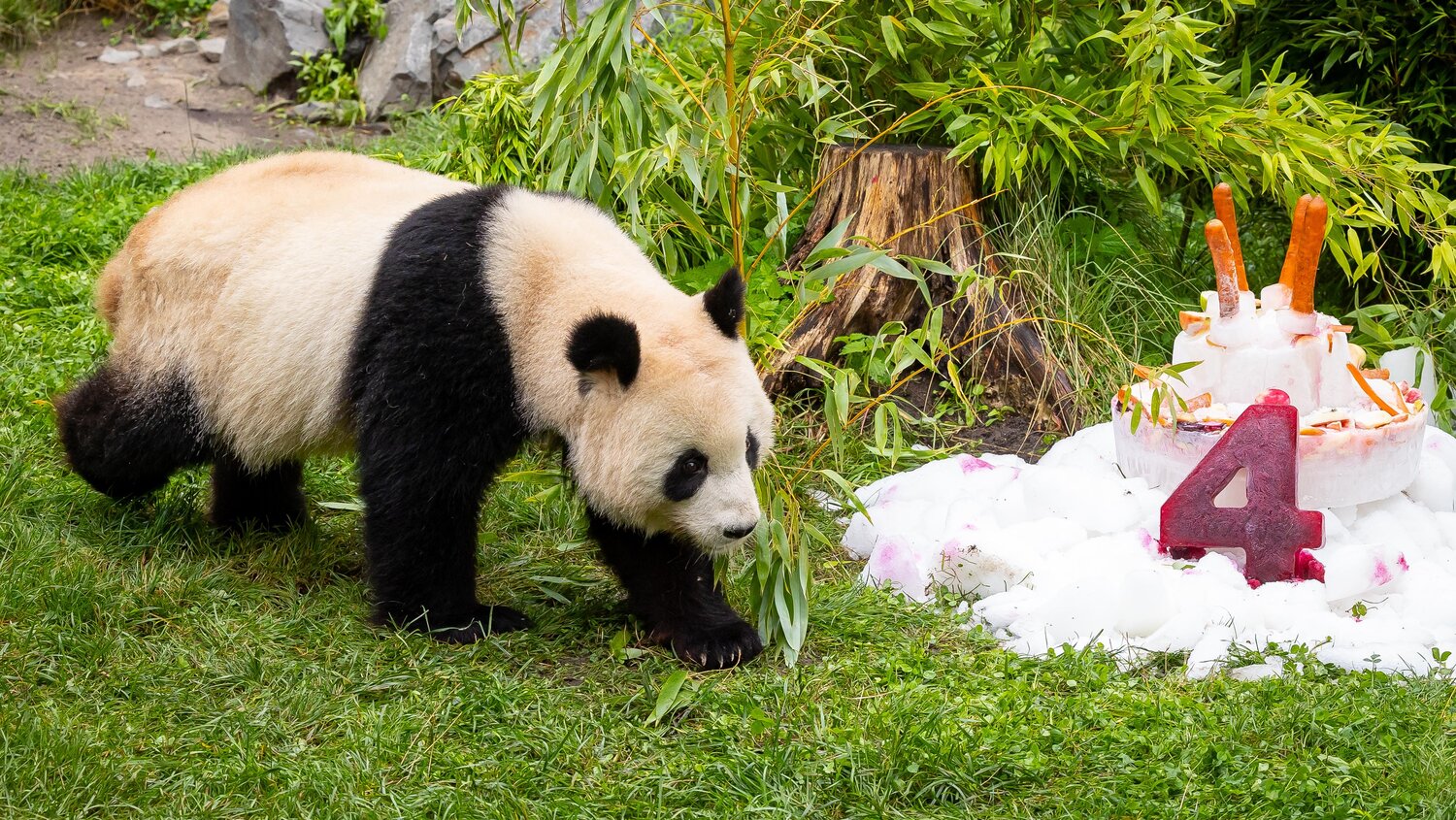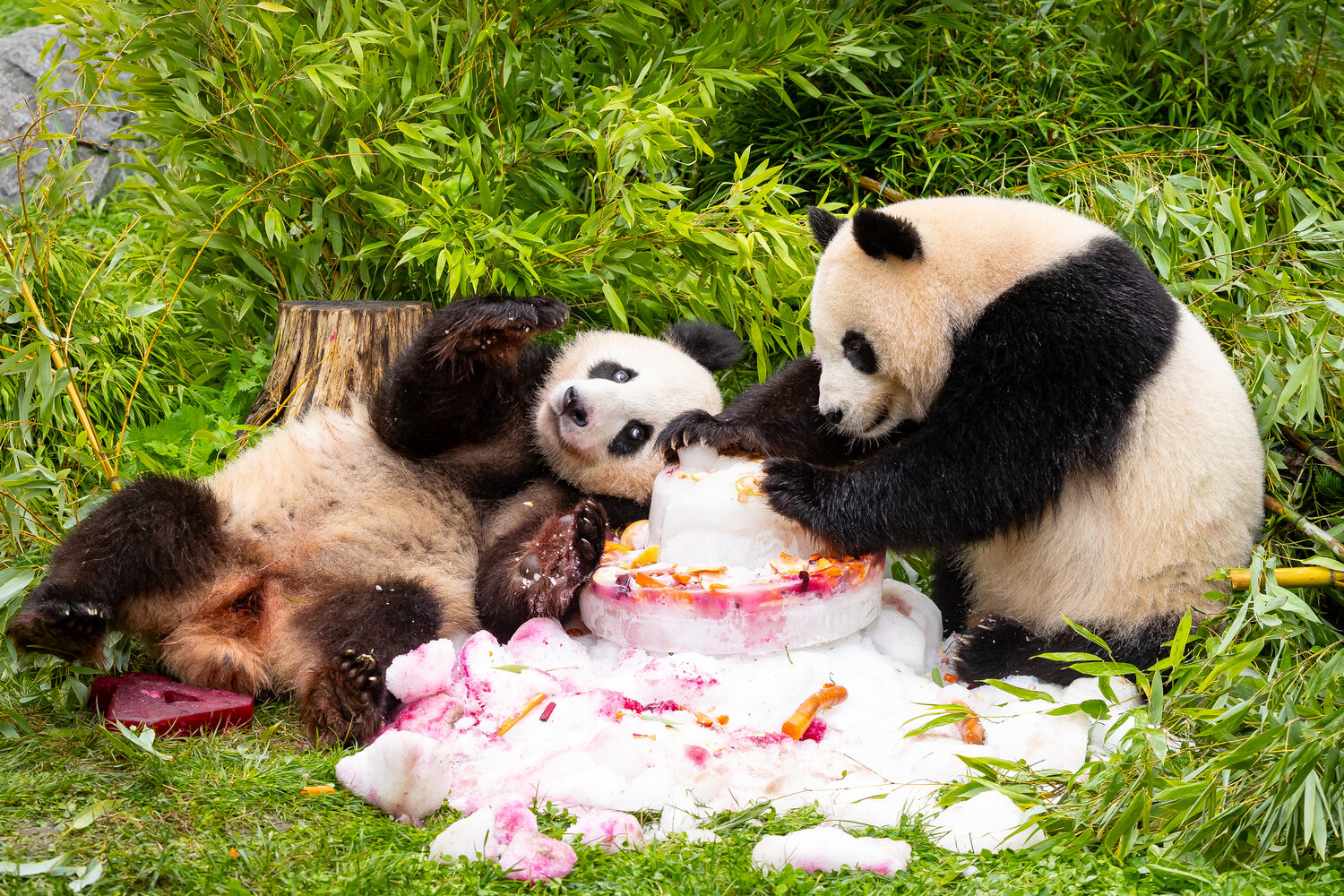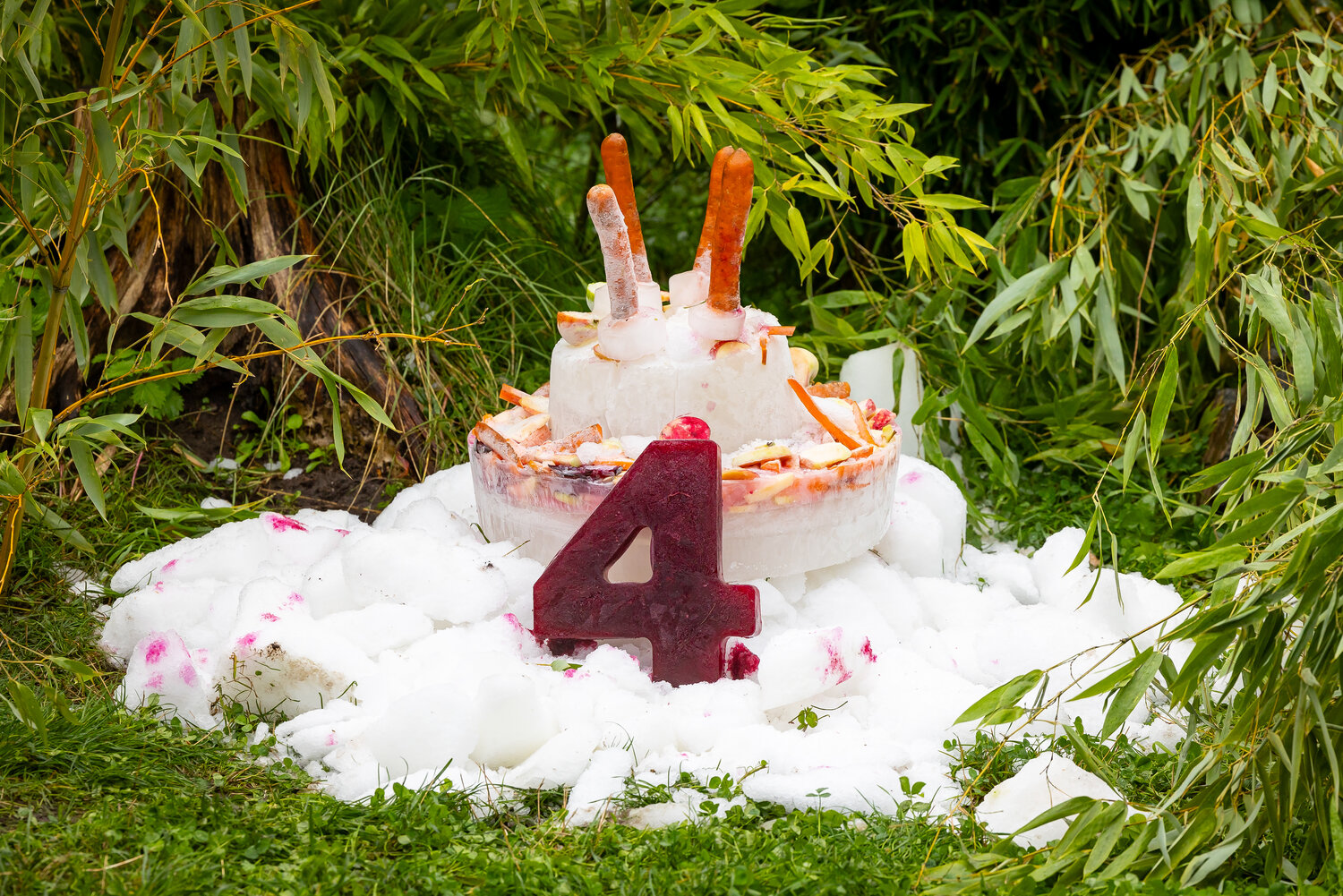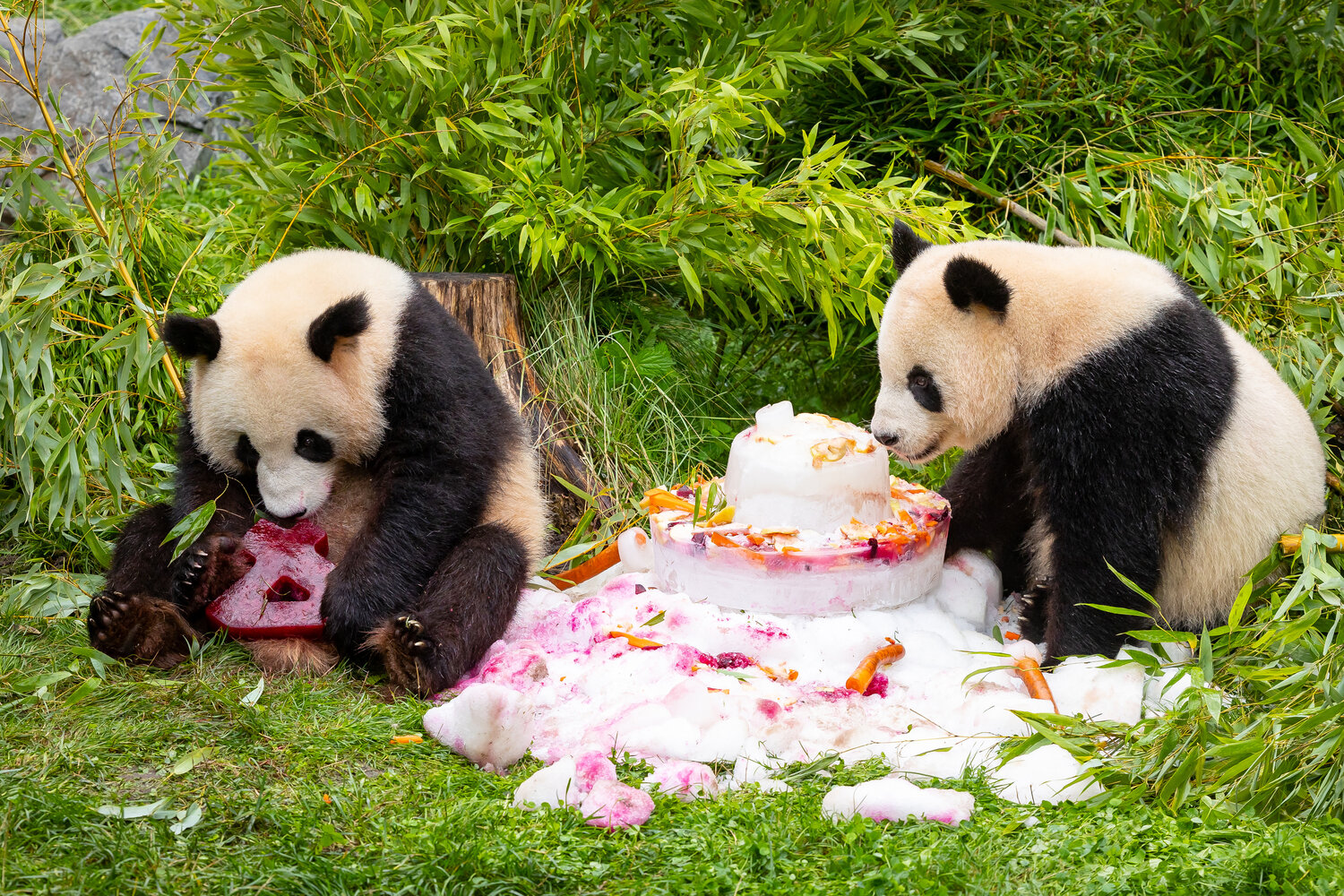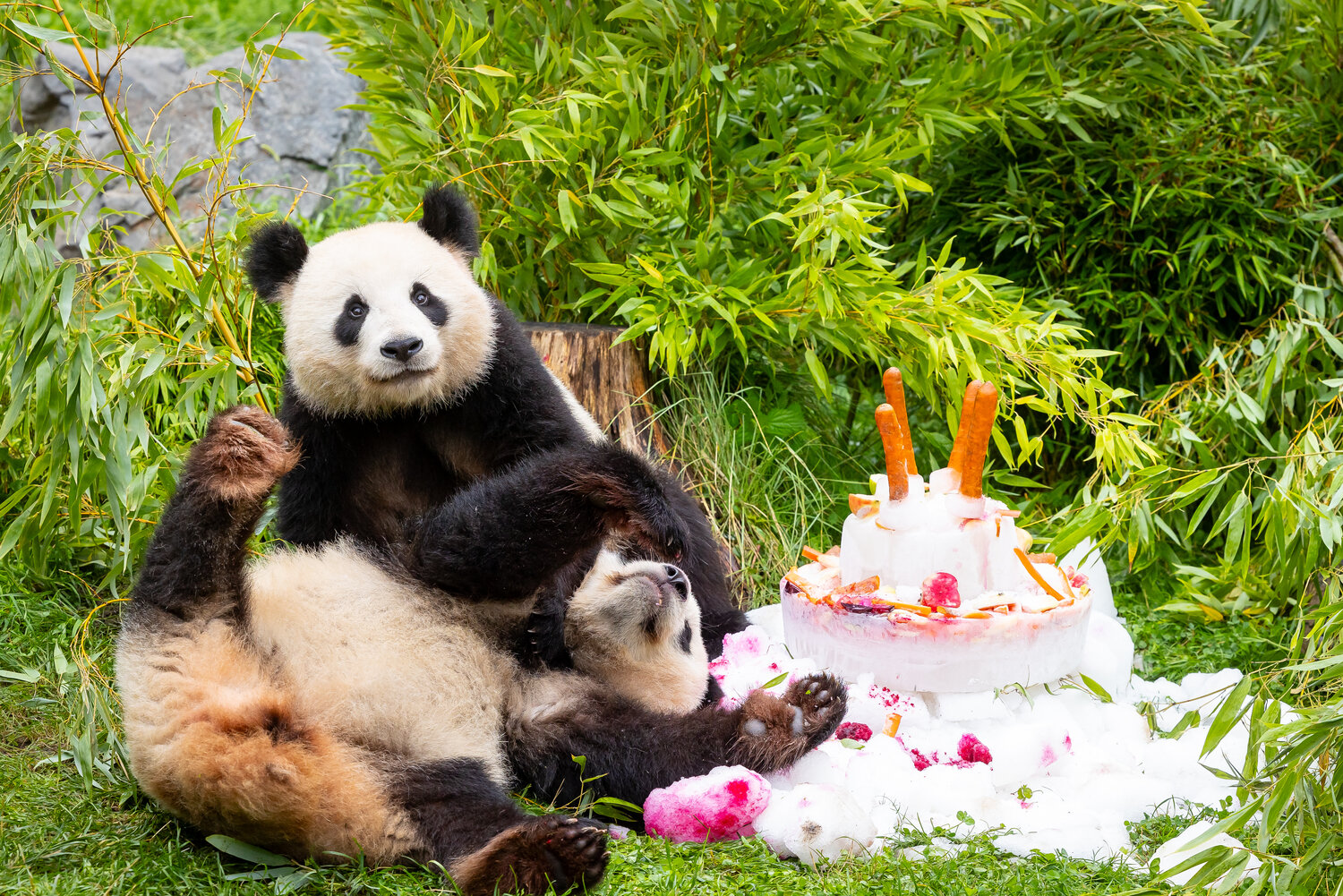When they were born on 31 August 2019, panda cubs Pit and Paule weighed little more than a bar of chocolate. Four years later the panda twins are a hefty 80 kilos each. These two bears are particularly special, as they represent the first – and still the only – giant pandas born in Germany. Today, Berlin’s famous panda pair celebrate their fourth birthday, which makes them teens in panda years. On their special day, the keepers surprised them with a tiered ice cake adorned with tasty panda treats like carrots and apples. The special cake was decorated with a gleaming red “4” made from frozen beetroot juice. Pit and Paule were particularly excited about the extra portion of ice from the snow cannon. And, of course, there’s one thing no panda party can be without: bamboo! After all, 99 percent of a giant panda’s diet is made up of different varieties of this sweet grass.
Despite hitting bear puberty, Pit and Paule are still an inseparable duo. Clever clogs Pit continues to shine slightly brighter than his brother during their medical training sessions, but Paule is no longer the little hooligan he was two years ago. The twins are therefore getting increasingly similar not only in appearance, but in behaviour too.
Only some 2,000 adult giant pandas are currently living in their natural habitat – the mountain forests of southwestern China. The species is classified as “Vulnerable” on the IUCN Red List. “Despite extensive conservation efforts, we still cannot guarantee the long-term survival of these animals in the wild,” says Zoo and Tierpark Director Dr Andreas Knieriem. “We would like to take advantage of the popularity of these charismatic ambassadors for species protection to draw our visitors’ attention to how human activity is putting species all over the globe at risk of extinction.” The story of the giant panda is proof that conservation measures can work. In 2021, the Chinese government announced that the species is no longer considered at risk of extinction. “As a zoological facility, we are part of a global species conservation network,” explains curator Dr Florian Sicks. “The successful conservation of giant pandas is thanks to the joint commitment of zoos, conservation agencies and local authorities – and Pit and Paule represent a small but important part of those global conservation efforts.”
Background
Zoo Berlin has been home to Germany’s only giant pandas since summer 2017. The giant panda has become a global symbol of endangered species. A panda features in the famous logo of WWF, for example – one of the world’s best-known wildlife conservation organisations. Giant pandas were once found from right up in the northeastern part of China all the way down into Myanmar and Vietnam. Today, their territory has shrunk to the sparse coniferous and deciduous woods of the mountainous regions around China’s Sichuan, Shaanxi and Gansu provinces. With their very particular nutritional needs and extremely short mating season of only around 72 hours a year, giant pandas are particularly affected by the loss of their native habitat. Finding food and a mate is increasingly difficult in China’s fragmented nature reserves.
Giant panda facts & figures
- Zoo Berlin welcomed its first ever giant panda in 1936 – a male by the name of Happy.
- In 1958, female panda Chi Chi made a brief three-week stopover at Tierpark Berlin. She was the muse that later inspired the WWF’s world-famous logo.
- In 1980, Berlin’s first panda couple Bao Bao and Tjen Tjen arrived in the western part of the city as a gift from the Chinese leader Hua Guofeng to German Chancellor Helmut Schmidt.
- Bao Bao lived to the ripe old age of 34, eventually passing away in 2012 as the oldest male panda in the world at that time.
- In June 2017, thanks to the efforts of Chancellor Angela Merkel, panda pair Meng Meng and Jiao Qing arrived at Zoo Berlin.
- On 31 August 2019, female panda Meng Meng (now aged 10) gave birth to two cubs: Pit, who weighed 186 grams, and Paule, 136 grams. Father Jiao Qing (now 13) has not been involved in the rearing of the cubs, as is normal for giant pandas.
- The most recent estimates suggest that there are only 1,864 adult giant pandas living in their natural habitat – with almost 70 percent of them in state nature reserves.
